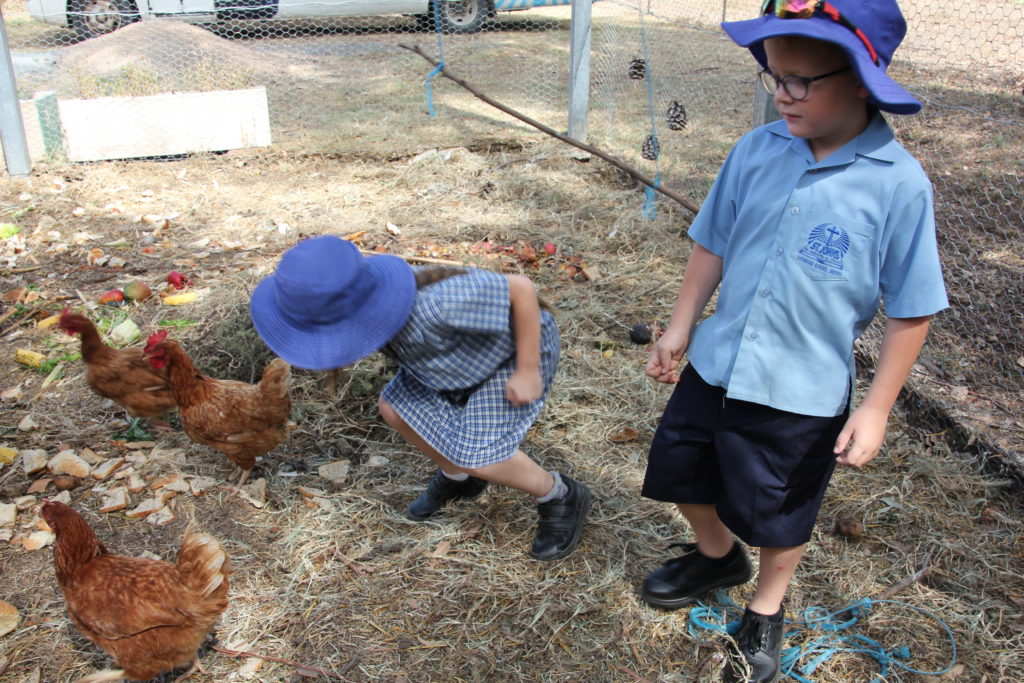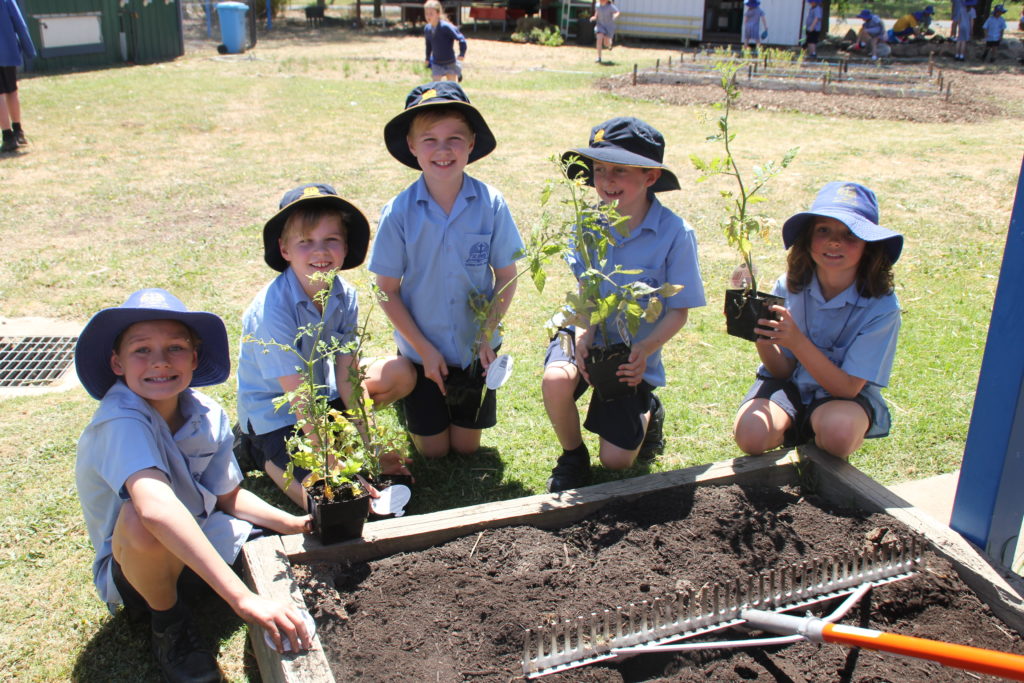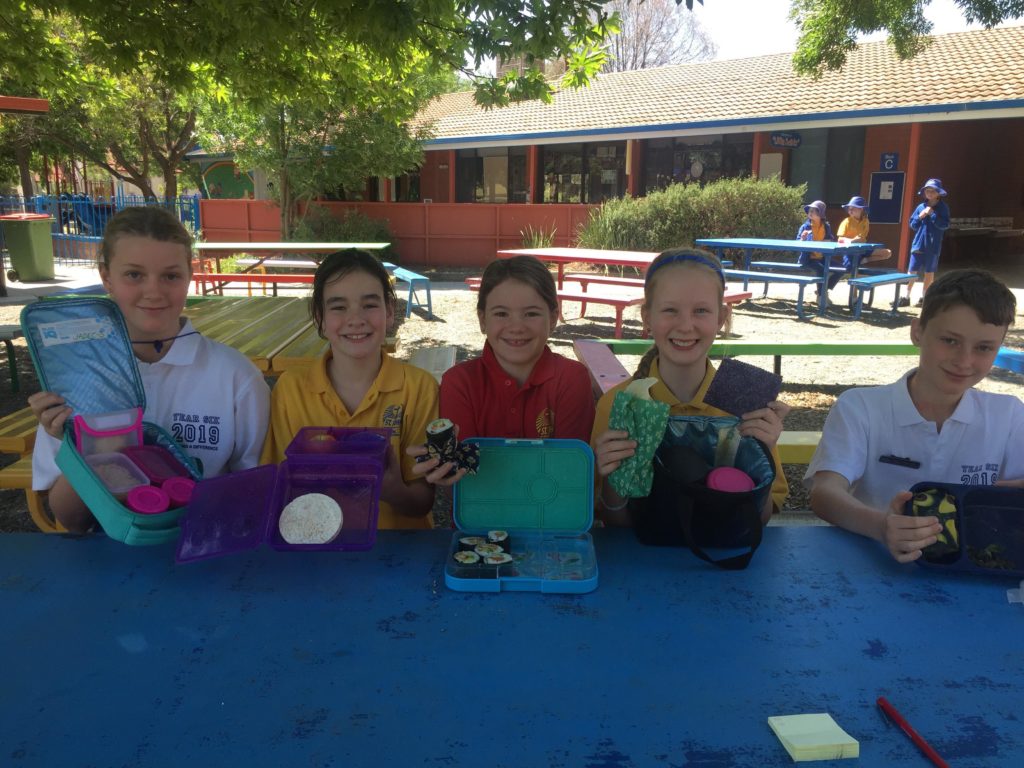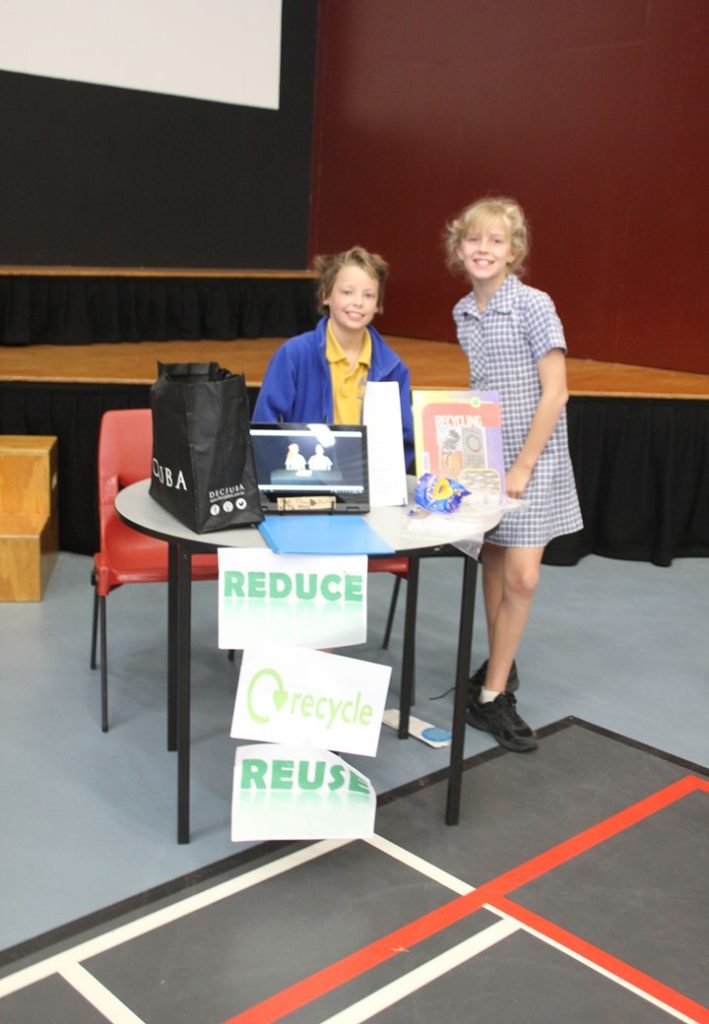

Many schools have school vegetable gardens these days and there is also now a focus on environmental issues. I am lucky to be involved in a great little school – St John’s Lutheran Primary School, in Jindera.
About 3 years ago, the school installed a chicken coop (Cluckingham Palace) and started working towards establishing a kitchen garden. The food scraps from school lunches are gathered each day and fed to the chooks who express their gratitude by laying eggs that are then sold to teachers and parents or used at the school.
Last year when my little person started school I began volunteering for an hour or so each week in the kitchen garden. A variable number of kids join me each week and we work on different projects with a focus on growing food. We gave ourselves the name “The Garden Gang” and it is a pretty cool gang to belong to. I am not the gang leader by the way, I am just the responsible adult who facilitates the gang’s activities and finds the resources for them. The members of our little gang can tell you all about compost with a focus on Pooh! (they are in primary school remember!)

We make our own fertiliser – Pooh Tea – with the droppings from the chicken coop. The boys particularly enjoy giving it a stir and commenting on the slightly odoriferous contents. Some of the girls come just to enjoy a hug with the chooks and I am certain some of the chooks just love their weekly hugs. Each week the worm farm is checked and the worm wee is put out on the vegetables. One of the major events each week is the inspection of our growing vegetables and the harvest and tasting that goes along with that. Radishes were popular but the carrots (that are never going to make it beyond baby size) rule supreme. We pick a couple of buckets of greens and weeds to give to the chooks and worms and generally have a lot of fun. Some of the older boys (10 years old) work incredibly hard each week digging, moving soil and compost, constructing frames for vegetables and building scarecrows.
The learning that happens in the short period of time each week is amazing. Problem-solving skills come to the fore as they learn how to construct what they need from found items. We have had failures along with our successes but that is what gardening is all about. We talk about our successes and failures and how we can do better next time. We have learned about beneficial insects and about those that destroy our hard work. We use natural methods of pest control and work on making sure our soil is healthy and our plants are strong. The best bit about Garden Gang is the enthusiasm these children have for our environment and the joy with which they learn how to grow their own food. Saving and sowing our own seeds has also been a wonderful learning opportunity and their pride in growing plants from seed they harvested is wonderful to witness.
The Year 5 and 6 classes commenced learning in a different way this year using a Project-Based Learning Style. The first project they undertook focussed on the environment and sustainability. The students worked in small groups of 4 or 5 and researched both issues and then formulated responses to the issues. I met with three of the students for a chat about what they learned. I was impressed with their enthusiasm and excitement about their projects and the way they were able to present what they had done to me. Each small group came up with different ideas that they then put into practice and some of these practices are ongoing and having a beneficial impact within the school.

One of the ongoing projects is Nude Food days where the rubbish from each child’s lunch box is counted on a specific day each week and a tally is kept for each class. The students aim to reduce the amount of single-use plastic brought to school and are putting pressure on their parents to help with this. One of the girls I spoke with told me that her mum was already packing nude food and using beeswax wraps before the project commenced but she was in the minority. Others told me how they were able to find suitable small containers at home to replace plastic wrap and they didn’t need to buy any new items. The kids are not perfect (there is still litter on the ground after lunch break) and the lunch boxes (so they tell me) still contain too much single-use plastic but they count that amount and are aiming for a reduction. The conversation that occurs around plastic and litter is another learning opportunity for them. The students are now aware of the impact of their practices on their environment.

The students also produced some of their own products, learning how to make and package beeswax wraps and reusable shopping bags. One group purchased metal straws in response to finding out how many plastic straws are polluting our environment. The straws, bags and wraps along with some other products were sold by the students to the other students and their families. As a result of their sales the students raised some money and decided that they would put that money into caring for the environment of their school. A compost tumbler, worms for the existing worm farm, seeds and other equipment were purchased and are being used at the school.

It is unrealistic to expect everyone to be 100 percent environmentally sustainable but if each one of us does just one thing differently the impact will be huge.

The students at St. John’s and many other primary and high schools are leading the way in taking responsibility for their environment – one that they have the ability to change for the better. We as adults need to join them and get on board in the reduction of single-use plastic.